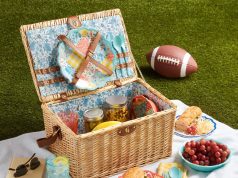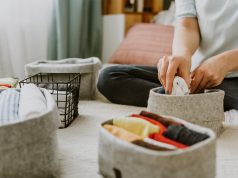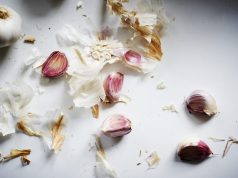Landscaping can be tough if you don’t know the first thing about plants but with a little research, you won’t need an expert to design your garden and charge you a ton. Skim through these tips and they’ll guide you through picking the right plants for your space.
By Mariam Elhamy
First, pick the right color scheme for you:
Just like when designing a room, a garden needs a color scheme so that it doesn’t look messy or haphazard. Pick the colors that suit your style, garden structure and your home style.
Try to stick to a maximum of 3 colors. However, feel free to use more if you prefer a wilder feel or if you have a wide area and you’re planning on creating differently themed patches or flower beds.
Remember that cool colors like blue, green and purple add a relaxed feeling, whilst more vibrant colors like red, yellow and orange are more energizing and exciting to the eye.
The easiest way to create a color scheme is to throw in different shades of the same color. If you’re afraid that it will look too monochromatic you can throw in some whites to break it apart. 
Assess the size of your garden:
It goes without saying that you need to know how big or small your space is. So get a measuring tape and take measurements before you go plant shopping. landscaping
Start with trees and shrubs:
Trees set the foundation on which you will plan your landscape. Before buying, know the different types of trees like flowering trees, fall-foliage trees, fast-growing shade trees, evergreen trees and dwarf trees. Same with shrubs.
Keep in mind that seasons change and so do plants:
Each plant has a different season for flowering and dying. Don’t plant large areas of plants that only flower once every 11 months because they will lay bare all year round. Select different varieties so that you have flowers every season.
Plan with variance but don’t go crazy:
When you vary the size, shape and length of your plants it helps shed a spotlight on each plant. Plants with thinner leaves look good with plants that have broader leaves.
 Taller plants give way for shorter plants and add another layer of visual interest that keeps the garden from looking all the same. Repeat the same plant more than once so that you create coherence between each patch in your garden.
Taller plants give way for shorter plants and add another layer of visual interest that keeps the garden from looking all the same. Repeat the same plant more than once so that you create coherence between each patch in your garden.
Pick the correct spots for the correct plants:
You will need a little help from your gardener to know the spots that are sunny or shady most of the day. Ask your vendor about the necessities of the plants you buy, do they need a lot of sunlight or go in the shade? How much water? How much moisture? What weather conditions can they stand? landscaping
Consider the maturity size before buying:
You don’t want to place a plant that grows up to 6 feet long in the middle of your garden. You might look at the current size of a plant in the pot and plan accordingly. However, most plants will grow MUCH bigger once they are in the ground. landscaping
Make sure you do a bit of research about the size and length of each plant after it matures before choosing the right spot for it and try not to overcrowd your plants.
Consider the amount of maintenance that needs to be done:

How much work are you willing to put after you’re done designing and planting your garden? Some plants will need to be kempt and pruned regularly so if you’re not willing to do the work and you don’t have a gardener, pick the plants that are less high-maintenance.
Buy perennial plants that last long:
Annual plants can only live for a year which means you have to buy and plant new ones each year. To save time and money, only buy perennials that will grow year after year so you only have to plant them once.
Know the type of soil you’re planting in:
You can actually amend your soil when you know its type to create the right conditions for your plants. This will also help you choose the right type of fertilizer.
Try container gardening if your space is limited:
 Most small flowering plants will be right at home in a pot, box, or planter. Pick up a few containers of the appropriate size and plant your mix of flowers there.
Most small flowering plants will be right at home in a pot, box, or planter. Pick up a few containers of the appropriate size and plant your mix of flowers there.
So, to sum it all up, before buying any plants you need to ask yourself a few questions:
- How big will this plant get?
- How much space do you have to offer it?
- How easy or difficult and how frequently will you need to prune and maintain it?
- Does it fit in your color scheme?
- Is it annual or perennial?
The answers to these questions will guide you through your plant shopping process.





